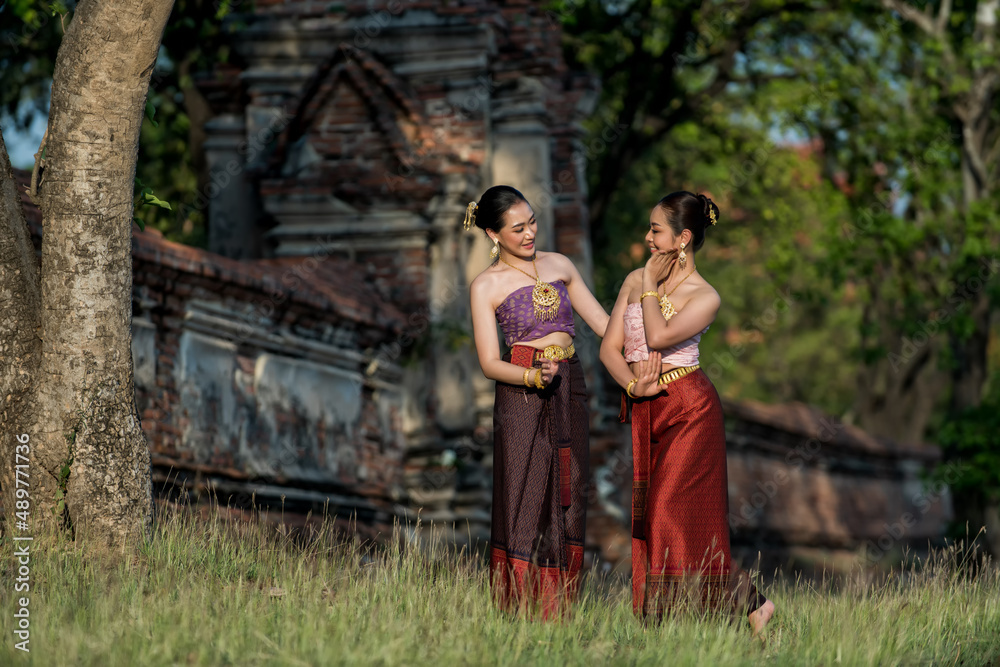When one ponders the beauty of women from around the world, the allure of Thai women often rises to the forefront. Their beauty transcends mere physical attributes, delving deep into the rich tapestry of culture, tradition, and history. This article embarks on an exploration of the enchanting question: “Why are Thai women so beautiful?” It seeks to unveil the intricate layers of culture and myth that contribute to this perception while inviting readers to challenge their own stereotypes and preconceptions.
Cultural Heritage and Impressions
First and foremost, one cannot overlook the profound impact of Thailand’s cultural heritage. Rooted in centuries of history, Thailand has forged a unique identity that celebrates beauty in various forms. Traditional Thai dress, notably the elegant “chut Thai,” exemplifies grace and femininity, often accentuating the natural beauty of Thai women. The flowing silk attire not only showcases their figures but also brings forth an aura of sophistication and poise.
The emphasis on tradition extends beyond attire; it seeps into the very fabric of society. The teachings of Buddhism, which predominantly influence Thai lifestyle, promote values such as kindness, compassion, and inner beauty. This spiritual aspect often results in a serene demeanor that many find irresistible, challenging the viewer to appreciate beauty as a holistic experience.
Physical Attributes
It is essential to acknowledge the physical attributes that many associate with Thai beauty. Typically, Thai women possess features such as smooth skin, delicate facial structures, and expressive eyes that seem to narrate stories of their homeland. However, it is prudent to avoid generalizations. Beauty is multifaceted, manifesting variances across regions and communities within Thailand. Thus, the stereotype of a single, archetypal beauty might lead one to overlook the rich diversity that exists.
Moreover, it is worth considering the intersection of beauty standards in Thailand. The influence of globalization and media has reshaped perceptions of beauty, leading to new trends and ideals. This evolving nature of beauty, however, does not detract from the inherent charm and qualities that define Thai women; instead, it highlights a dynamic culture that is continually adapting while retaining its core values.
Health and Wellness Culture
Thai women often embrace a lifestyle that harmonizes physical health and mental well-being. Traditional Thai practices, such as yoga and meditation, are interwoven into daily life, promoting both physical fitness and emotional tranquility. Furthermore, the ubiquitous availability of fresh produce and culinary prowess in creating healthy dishes contributes to an overall glow and vitality among many Thai women. This embodiment of wellness serves as a compelling reminder that beauty often begins from within, prompting an invitation to readers to reflect on their own health practices.
Additionally, beauty treatments and rituals are an integral part of Thai culture. Many women engage in skincare routines that prioritize natural and organic ingredients, demonstrating a commitment to self-care. This gentle, nurturing approach towards their appearance reinforces the notion that beauty should not merely conform to societal expectations but stem from a place of love and respect for oneself.
The Role of Family and Community
The familial bond and community influence play significant roles in shaping the identity of Thai women. Traditionally, Thai society places high value on family, with mutual support and collective responsibilities defining social interactions. This interconnectedness fosters a nurturing environment where women are celebrated for their unique qualities and contributions. Within this context, beauty is often viewed as an expression of character rather than just physical appearance.
In ceremonies and celebrations, the graceful manner in which Thai women perform traditional dances and rituals reinforces the idea of beauty interlaced with cultural expression. These moments become powerful affirmations of identity and grace, imploring the audience to appreciate beauty not just as a visual spectacle but as a representation of tradition and resilience.
Mythology and Folklore
To further appreciate the beauty of Thai women, one must delve into the compelling world of Thai mythology and folklore. Tales of heavenly beings and legendary characters imbue the perception of beauty with a sense of mystique and spirituality. Figures like the “nang tani,” a mythical woman who embodies beauty and temptation, illustrate how culture has woven beauty into the realm of fantasy and spirituality.
This folkloric backdrop often shapes societal ideals, leaving a significant imprint on how beauty is appreciated and pursued. An exploration of these narratives urges one to rethink preconceived notions of beauty, questioning how cultural legends can simultaneously inspire and challenge modern expectations.
Conclusion: A Personal Challenge
As we traverse the intricate landscapes of beauty and identity, it becomes evident that the beauty of Thai women is far from a superficial observation. It is an amalgamation of cultural practices, physical attributes, health and wellness, familial bonds, and the enchanting world of folklore. Consequently, the challenge posed to the reader is not merely to recognize a stereotype or a single narrative but to celebrate and embrace the complexities that weave together the essence of beauty in Thailand.
In conclusion, the exploration of why Thai women are perceived as beautiful invites a moment for self-reflection. It encourages individuals to question their ideals about beauty, to celebrate diversity, and to appreciate the unique stories each individual carries through their culture, heritage, and experiences. Beauty is indeed in the eye of the beholder, but to truly appreciate it, one must endeavor to look beyond the surface.

